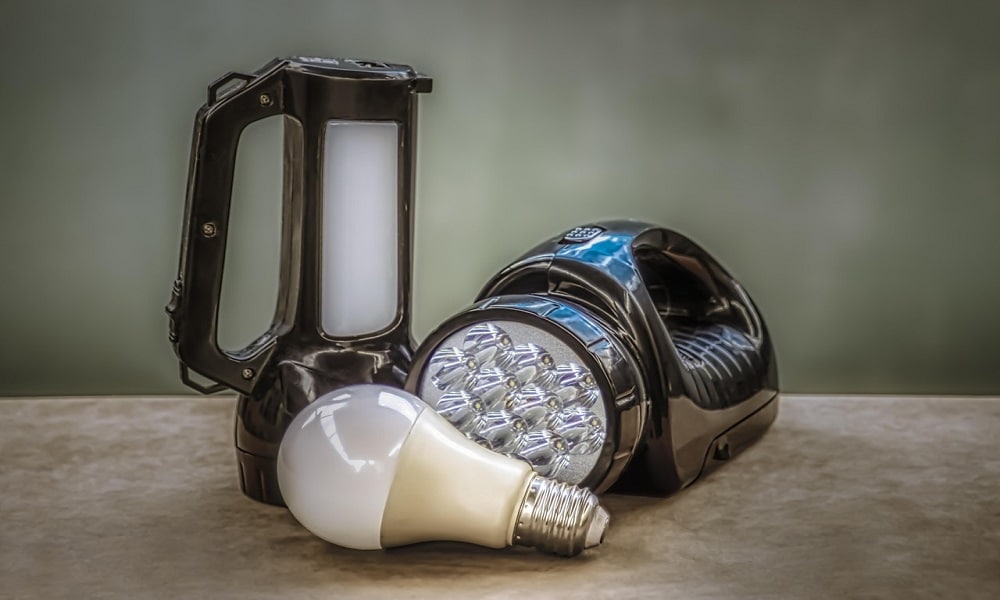You’re a contractor who’s also home-based. Working out of your garage or backyard shed has its perks. You’re moments away from a quick lunch and taking the family dog for a walk during a break. Achieving a balance between work and life responsibilities aside, the spaces where you get the job done require the essentials.
Equipment known as tools of the trade, such as workbenches and lighting, ensures you’re prepared to handle anything. Lighting gear, especially, can help you work at odd hours and in dimly lit spaces. Some of these devices are also a must for work areas without electricity. Get ready to learn what lighting gear you should consider for your home-based gig.
Rechargeable LED Work Lights
Regardless of whether your home-based “office” has electricity, a rechargeable work light with LED bulbs makes a difference. You never know when there might be a power surge or an outage. Suddenly finding yourself immersed in the dark can be a real safety issue. Not to mention, convenient spaces for setting up shop may not have the best lighting anyway.
For instance, garages often have dimmer lighting that may not shine enough light on the tasks at hand. Instead, you want something smaller and portable that you can set up closer to the bench. In some cases, you may want a light source you can clamp or mount on a small tripod.
These additional features keep the light focused and steady while completing tasks requiring high levels of precision. Rechargeable, portable LED work lights also work well in spaces that aren’t connected to the grid. Whether you’re in a shed, small trailer, or outdoors, you’ll have enough light to work efficiently and safely.
Headlamps
Say your workspace is tight. Perhaps you’re out on a job site and it isn’t safe to hold a flashlight in your hands. You need a hands-free light source, which headlamps can provide.
These are light sources you wear, so you don’t have to worry about devices taking up space. Besides keeping your hands free, headlamps illuminate what’s right in front of you. It’s a focused source of light, illuminating the details of the objects you need to concentrate on.
Headlamps run on battery power, so they’ll work whether you’re on the grid or off. Some feature rechargeable batteries, making these devices a convenient, cost-effective choice. Many come with LED bulbs and are built to withstand tough environments. These harsher conditions include everything from inclement weather to dust in the air.
String Work Lights
If you want to illuminate your workspace from up above, consider investing in a pair of string work lights. These work best if you need to shine light on a specific side of a workbench or a rectangular area. The concept of using string lights is fairly simple. You hang them on a wall. You can also mount string lights on a steady structure, such as a garage’s storage shelves that hang from the ceiling.
The difference between regular string lights and work versions is that the latter has protective cages. You’ll notice the cages on the exterior of the lamps. These protective coverings shield the lights from more extreme conditions. Cages protect string lights from getting damaged or broken from flying objects.
Cages also guard against weather-related and industrial hazards. String work lights come in LED versions to enhance brightness and energy efficiency. However, in most cases, you will need electricity to use these lights. You may be able to use an extension cord in sheds that may not be plugged into the grid. As long as you can keep the extension cord from becoming a trip or fire hazard, it’s a viable option.
Hanging or Magnetic Work Lights
Yet another hands-free option is to use hanging or magnetic work lights. Hanging work lights are typically smaller and portable. Some may plug into an electric outlet while others run off battery power. You’ll find that these devices also usually have protective cages around the light source.
If you’ve got a sturdy enough hook on a nearby surface, you can place these lights above your work area. Magnetic lights offer a bit more convenience since they stick to a surface without needing a hook. Of course, the caveat is that the surface has to have a magnetic charge.
Nonetheless, magnetic work lights can be smaller than hanging versions. These devices also tend to rely on batteries for power. When the job requires getting up on a ladder to hang a brand-new gutter, magnetic devices can light the path. Considering 500,000 individuals are treated for ladder-related injuries annually, proper illumination is a must. You can’t prevent injuries if you’re “feeling” your way to the next rung.
Essential Lighting Gear
When you’re home-based, it can seem natural to want to use whatever light sources you already have. Sure, the one ceiling-mounted light bulb in the garage may not brighten up every corner. But it’s enough to make out most of what’s there, right? The problem is that existing lighting may not be sufficient for the precision home-based contracting work requires.
It’s why investing in professional gear can boost safety, efficiency, and business. Deciding what type of work lights will work best depends on where your shop is set up. Your choices will also be influenced by the different job sites you frequent and the extent of the work. From rechargeable to hangable work lights, the essential tools of the trade will benefit your productivity at home and on-site.


